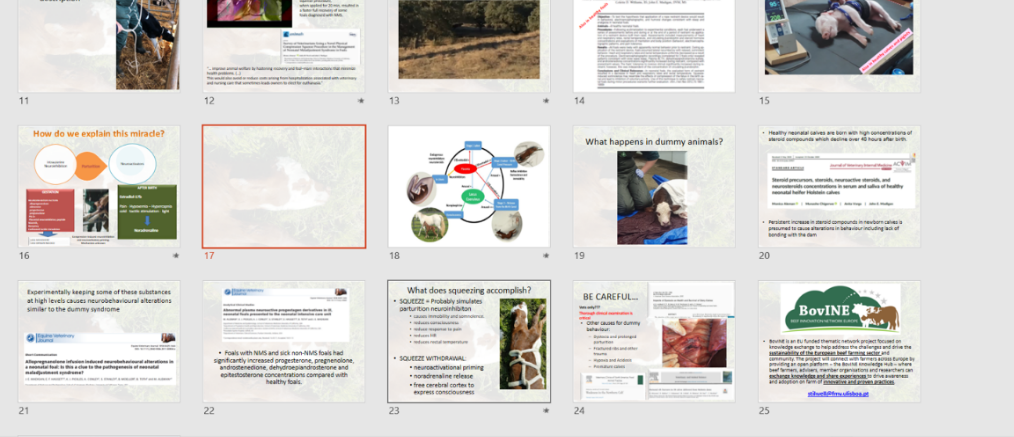Faculdade De Medicina Veterinaria (FMV) Universidade de Lisboa (ULisboa) and Associação de Criadores de Bovinos Mertolengos (ACMB) organised two presentations of the Research Innovation: “Thoracic Squeeze in new-born calves with maladjustment syndrome” in Portugal. The first one was an on-farm demonstration. With the demonstration video produced during the on-farm demonstration an online webinar has been given to Scottish vets on 27 January 2021. The organization was by Veterinary Services, Scotland's Rural College (SRUC) and FMV-ULISBOA. In this session, the physiological mechanism was described and the technique was demonstrated through the video. The same webinar was given online on 2nd March 2021 to practitioners from England and Wales. The organization was also from SRUC and FMV-ULISBOA. Below is a print-screen of some of the slides presented, the slides are also attaached a s PDF to this text (see below).
 Print screen of slides presented during the webinar
Print screen of slides presented during the webinar
As an obstacle the participants saw the timeliness of farmers contacting a vet (In some cases the calves are too old by the time the vet is notified) and that farmers may be afraid to use the technique themselves or use it in the wrong cases.
The trainees said if a farmer is confident using the technique himself, he can save calves with zero costs and save time feeding them. If the vet is needed to do the squeeze it Could be costly given £2.40pm vet fees squeeze for 20 minutes therefore likely expensive. Although the trainees saw the squeeze as good to engage intern/junior members of team to implement.
To the question if they will spread the word to other practitioners the answer was positive. However, about recommendation of the technique to farmers the answers were mixed. Here are some examples: “This would be the greatest opportunity for the technique but would not teach all farmers, only those which I trust would follow instructions well and cause no harm!” “Since you have to access the dummy condition before doing the technique, not all farmers will be able to perform it. Some farmers may accidently perform it on calves that have other conditions associated, like broken ribs, potentially leading to the death of the calves.” “Yes, because In some regions veterinary assistance is not as easy or quick.”
Two more demonstrations have been organized on this topic, one in Ireland and one in Germany.